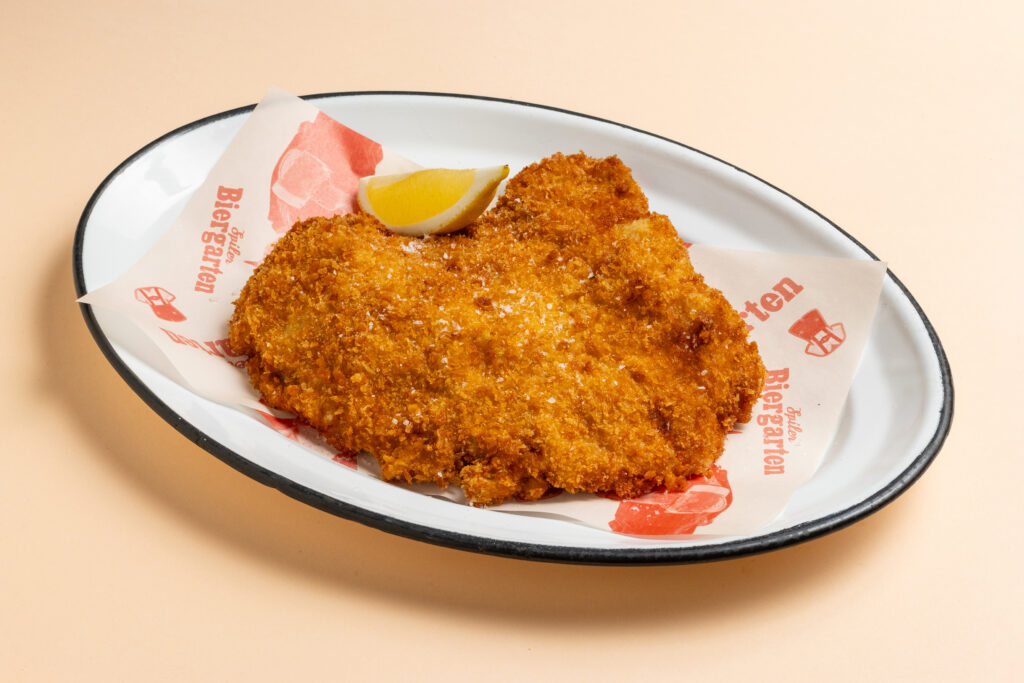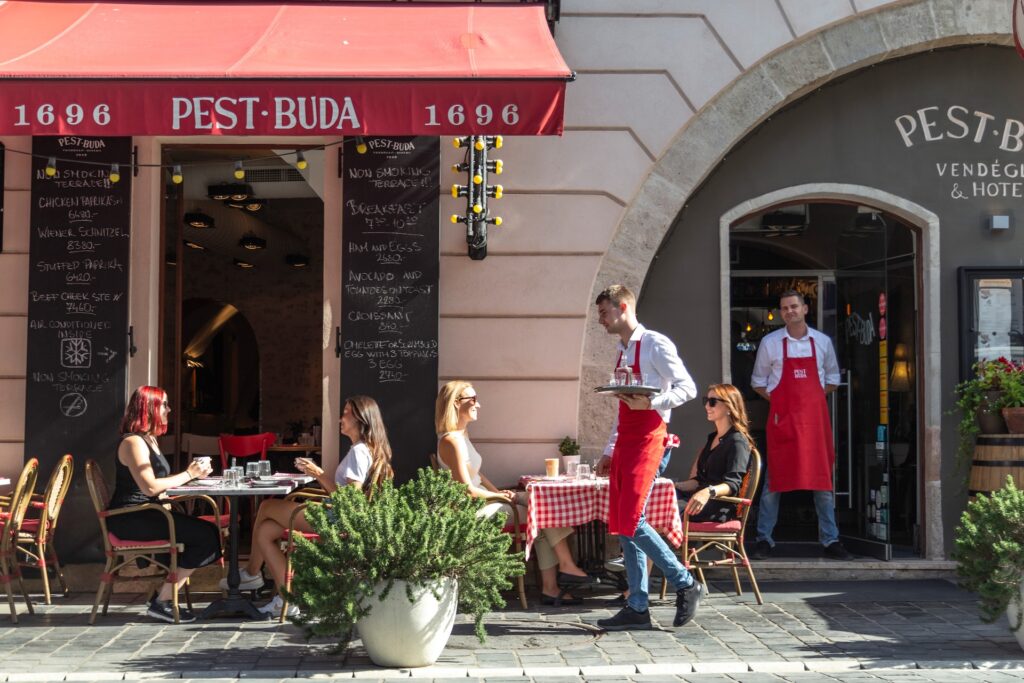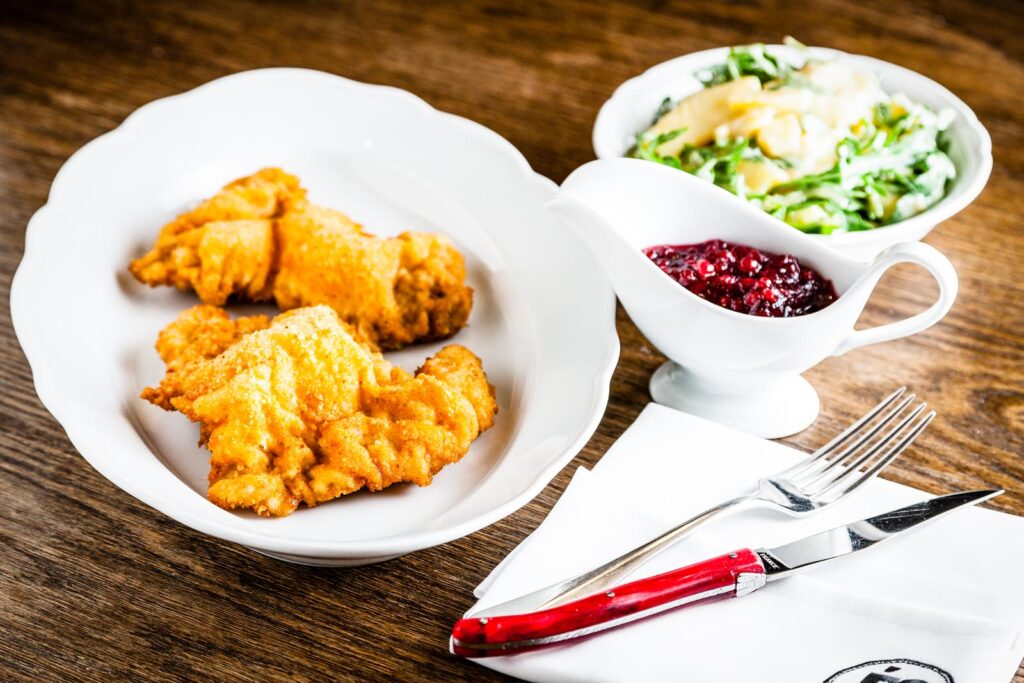If you’ve ever searched for the keywords Wiener Schnitzel Budapest or wondered what makes this classic dish so beloved across Europe, you’re in the right place. The Wiener Schnitzel is a traditional Austrian delicacy, known for its golden, crisp coating and tender veal interior. But its reputation doesn’t stop at the Austrian border—some of the best versions of this iconic dish can now be found in Budapest, particularly in Zsidai Group’s renowned Hungarian restaurants. From Buda Castle restaurants to stylish downtown venues, the Zsidai Group offers not only authenticity but an authentic culinary experience that celebrates the cultural richness of Central Europe.
In this article, we’ll explore what a Wiener Schnitzel is, its origin, what meat it’s traditionally made from, what side dishes best complement it, and—most importantly—where you can enjoy an exceptional Wiener Schnitzel in a Hungarian restaurant Budapest has to offer. If you’re looking for a memorable gastronomic experience that connects tradition with sophistication, read on.

What Is a Wiener Schnitzel?
The Wiener Schnitzel is a breaded and deep-fried veal cutlet, typically served with a wedge of lemon and a side of potato salad or parsley potatoes. Its name comes from the German words Wiener (meaning Viennese) and Schnitzel (meaning cutlet). An authentic Wiener Schnitzel is made exclusively from veal, pounded thin, lightly salted, dipped in flour, egg, and breadcrumbs, then fried to a golden perfection. While there are countless regional and modern variations using pork or chicken, the classic remains unmatched in flavor, texture, and elegance.
The Origins of Wiener Schnitzel
Though deeply rooted in Austrian cuisine, the story of the Wiener Schnitzel is a journey through Europe’s rich culinary history. Some food historians suggest that it was inspired by a similar dish from Northern Italy, cotoletta alla Milanese. Legend has it that Austrian field marshal Radetzky brought the idea back to Vienna from Milan in the 19th century.
From there, the dish was adopted and adapted to local tastes, becoming a symbol of Austrian gastronomy and eventually spreading across borders—including to Hungary. In Budapest, the dish found fertile ground to flourish, blending perfectly with local tastes and ingredients, especially within high-quality restaurant dining experiences, such as those offered by the Zsidai Group.
What does this dish contain?
Let’s take a closer look at the traditional ingredients of Wiener Schnitzel, as they are what truly define the dish’s character and quality.
What Meat Is Used in a Traditional Wiener Schnitzel?
To be officially labeled as a “Wiener Schnitzel,” the dish must be made from veal. Veal provides the ideal tenderness and mild flavor that makes the dish so appealing. However, outside Austria, it’s not uncommon to find variations made from pork or chicken—these are often referred to as schnitzel, but not Wiener Schnitzel, which remains a protected term in Austria.
In the refined kitchens of Zsidai Group restaurants in Budapest, authenticity is taken seriously. When you order a Wiener Schnitzel, you’re getting the real deal—prepared using traditional methods and the highest quality veal, ensuring an elevated dining experience.
What Is the Classic Side Dish for Wiener Schnitzel?
The quintessential accompaniments for a Wiener Schnitzel are just as necessary as the dish itself. A classic plate will include:
- Parsley potatoes – Light, buttery, and herbaceous, these are the most traditional side.
- A wedge of lemon – To add a fresh, acidic contrast to the rich, fried meat.
- Cucumber salad or potato salad – Adds a refreshing texture and balance.
- Lingonberry sauce – While more typical in some Central European variants, it’s a delightful sweet contrast.
Zsidai Group restaurants in Budapest often serve the schnitzel with beautifully seasoned potatoes and fresh salad—refined, yet comforting. It’s about respecting the dish’s roots while delivering it in an elevated setting.
Where to Eat the Best Wiener Schnitzel in Budapest?
If you’re visiting Hungary’s capital and searching for the best Wiener Schnitzel Budapest has to offer, you’ll want to explore the iconic locations under the Zsidai Group. These restaurants are not only culinary landmarks but part of the city’s rich hospitality tradition.
21 Hungarian Kitchen – A Premier Hungarian Restaurant Budapest Has to Offer
Located in the Buda Castle district, 21 Hungarian Kitchen offers a perfect balance between tradition and modern culinary craft. Here, the Wiener Schnitzel is elevated with attention to sourcing and preparation, delivering a plate that is both classic and contemporary. If you’re searching for a Buda Castle restaurant that feels like a time-honored escape yet offers refined flavors, this is it.
Pierrot – Timeless Elegance in a Buda Restaurant
Set in a 13th-century building, Pierrot is an upscale Buda restaurant where you can enjoy the schnitzel with an elegant twist. The ambiance here enhances every bite, making it an ideal spot for couples, business lunches, or anyone seeking a premium dining experience in the heart of old Budapest.
Pest-Buda Bistro – For a Laid-Back Yet Gourmet Experience
Casual but never compromising on quality, Pest-Buda Bistro is another Buda Castle gem. Its Wiener Schnitzel is everything it should be: crispy, tender, and deeply satisfying. It’s the perfect place to enjoy authentic Hungarian and Austrian dishes in a cozy, historic setting.
Each of these locations represents the very best of Hungarian restaurants Budapest has to offer—and yes, the Wiener Schnitzel is a star at all of them.

Why Choose Zsidai Group Restaurants?
Budapest is a city filled with culinary temptations, but not all restaurants are created equal. Zsidai Group is a name synonymous with quality, heritage, and innovation. For over three decades, the family-owned group has shaped the city’s gastronomic landscape, introducing visitors to an elevated yet welcoming dining culture.
Here’s why a Zsidai Group restaurant Budapest calls home is a must-visit:
- Authenticity: Every dish honors its roots while embracing modern culinary techniques.
- Atmosphere: Each venue tells a story—from medieval stone walls to contemporary elegance.
- Service: Hospitality here isn’t just a word; it’s an ethos.
- Location: Especially in the Buda Castle area, you’ll dine surrounded by history, beauty, and a view of the Danube.
And most importantly—whether you’re visiting from Vienna or Vancouver—these restaurants are not tourist traps. You’ll find thoughtful ingredients, refined dishes, and genuine warmth. You’re not overpaying for a view; you’re investing in a memory.
Wiener Schnitzel and Budapest: A Love Story
It’s no coincidence that some of the best Wiener schnitzels can now be found in Budapest. The historical ties between Austria and Hungary have shaped everything from architecture to gastronomy. The dish has found a second home here—reimagined, honored, and celebrated. Dining in Budapest today means exploring that cultural fusion. And when it comes to savoring a perfectly fried veal cutlet with an elegant touch, Zsidai Group’s restaurant in Budapest offers an unparalleled experience.

Taste Tradition at Its Best
The next time you’re strolling through the cobbled streets of the Castle District, or planning a culinary adventure in the heart of Hungary’s capital, let the scent of sizzling breadcrumbs guide you. The Wiener Schnitzel is more than a dish—it’s a symbol of Central Europe’s rich and shared culinary history.
In a Zsidai restaurant, you’re not just eating—you’re partaking in a story—a story of craftsmanship, hospitality, and timeless flavor. Whether you choose the refined setting of Pierrot, the tradition-focused kitchen of 21, or the charming Pest-Buda Bistro, one thing is sure: you’ll leave with a deeper appreciation of what makes Hungarian restaurants in Budapest truly exceptional.

